#i just think we should talk about the intricacies of coming out the devs series that was already chippy
Explore tagged Tumblr posts
Text
i just think forsy stumbling through an answer about ekky fighting for his honour mmmm
#txt#add to that ones gonna haunt me!#hey they said i havent update the forsblad bible in a while i appreciate it man i will get on it stat☝️#whatever you say honey!#i just think we should talk about the intricacies of coming out the devs series that was already chippy#because forsblad to the box because ekky just didnt like noesen getting close to his teammates (forsy. jesper)#and then going into the jet series with ekky basically growling at anything that even remotely moves#and that was BEFORE THE fight for honour so it felt like it was gonna happen anyways it just so happen the forsy hit was the last straw#smart fight... didnt grab the collar and wham at it... smart fight...#sorry none of my thoughts will make sense here my brain is the internet dialup sound rn#beauty in defending your partner...#hes a good guy... always doing that.#yeah he is#sorry thinking about smith hit on weegs ekky fight#anyways there was a thought here about ekky racking up pims hes in the top5 for the team and now the fight#how to show appreciation but not encourage him and also scold him at the same time#confliction confliction#idk man get out the muzzle out if he wants to be a big bad dog is all im sayin#well anyways
4 notes
·
View notes
Text
November ‘20
Cross Code
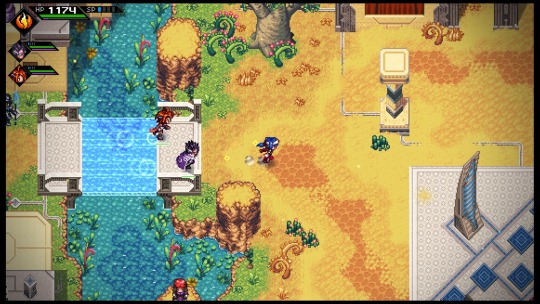
Cross Code is a game that is trying so very, very hard. The story is based around your character being an avatar within an MMORPG, and its this kind of game-within-a-game setup that is used as a cheeky way to skirt the fourth wall and have its characters make snide remarks at certain design decisions, while also going full steam ahead with them regardless of the fact. Don’t think we didn’t notice, dev team! It plays out as a 2D top-down action RPG, but clearly has aspirations that extend far beyond this framework. Each of its environments is thoroughly layered with subtle verticality, with parkour-esque platforming having you constantly working backwards from your intended destination, and requiring meticulous attention to detail in order to find where it is you’re able to begin your elaborate series of jumps from. There’s a huge array of materials to gather and channel through traders and to craft into gear, and the combat they benefit is both precise and complex, requiring plenty of on-the-fly thinking as well as tight execution. As well as these set-piece battles, the game’s dungeons are full of puzzles that though smart in construction, are tough enough in isolation, and frankly brutal in their relentless frequency. One particularly ill-advised chapter has a series of three such dungeons in quick succession, and perfectly illustrates that just because you can, does not mean that you should.
On a more positive note, one thing the game does have in spades is charm. The sprite work is admirable; even though characters are a touch on the tiny side to be too effective on their own, their portraits and dialogue provide a solid emotive connection to them and the story that builds up around them. In all, it is a game that can be a lot of fun, and plenty rewarding - but the entire thing is overly long and far too regularly punishing. It’s tapped into a number of 16-bit action-RPG ideas well, but has perhaps unintentionally also managed to become the most masochistic presentation of these ideas to date.
Crimzon Clover: World Explosion
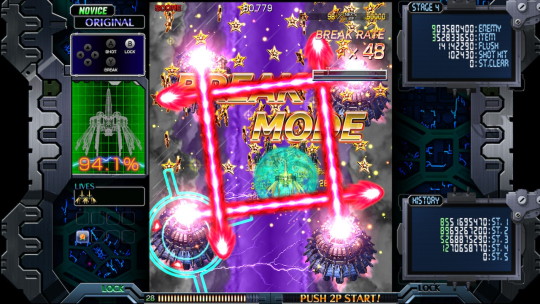
A game I’ve technically owned for years now, however the lack of a Windows PC has held me back from playing it - with this debut on the Switch finally granting me the opportunity though to get hands on. Although I’d gleaned plenty from watching super players decimate it before now, even my feeble credit feeding through the game’s five stages has given me plenty of additional appreciation for just how good it is.
It looks brilliant, with chunky, detailed enemies animated beautifully as they move about the screen. The music pounds along to an energetic beat, and the game keeps a solid pace all while plenty of bullets swarm around you in creative and considered patterns. Turning the tides with Break Mode is an incredibly satisfying way to take control of hairier moments, and while I can’t speak for every intricacy of its scoring system, I know that it’s developed by a team that demonstrably understands the value of these. What I can more reliably add to that discussion is that you’re unlikely to find yourself reliant on any one hook to find your fun though; even the most pedestrian appreciator of the genre should find plenty to enjoy. Thoroughly deserving of its regular appearance alongside the biggest names in the genre.
Holovista
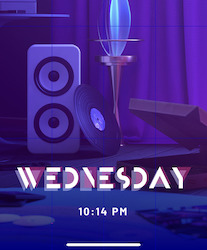
There’s often a reasonable amount of scepticism that comes from some folks when you talk of gaming on a mobile phone. Flipping the conversation though, and instead to talk of one of my favourite advantages of the format, it’s great that a developer can lean on the familiarity and the personal connection that you have to the device you’re playing on. As a device that lives by your side 24/7 and increasingly encroaches further into every aspect of your being, Holovista leverages this connection amazingly, spinning its story in a series of interfaces that mimic how your phone acts when you use it yourself. Taking pictures and interacting with people in particular are key interfaces, and that are done in a way that neatly puts you right into the shoes of their character.
It begins with said character taking an interview for a new job that is hoped to herald a new tide of good fortune, and promptly introduces the circle of friends that are there to help with this and that celebrate alongside. As you learn more about the job, things slowly begin to get a bit weird, and then take a turn that is something akin to Black Mirror meets nightmarish introspection. Though not overtly unpleasant, there are some memorably unsettling moments along the way. Sensibly, it does have content warnings that offer some sound advice for those it might not sit so well with, but self-care does end up being a central takeaway from the game as a whole as well as for its cast. On the back of circumstances we’ll generically chalk up to this year’s being what it is, this ended up feeling like a lovely little palate cleanser - a considered refresh, thoroughly original, and a very worthy afternoon’s entertainment.
The Legend of Zelda: Link’s Awakening
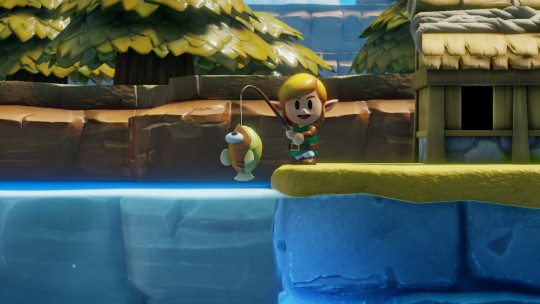
One thing that’s always been great about Link’s Awakening came as a result of the technical limitations imposed by the Gameboy - that the Zelda format needed all the fat trimmed, while the mixture of puzzles and action were to be distilled down into their most potent and compact form. Even with the (entirely optional) extras they’ve slipped in with this remake, this still shines through in its design now, where it couldn’t be any further removed from the risks of overly long, dragged out pacing. A small overworld it may be, but it’s full of variety, secrets, and memorable moments. Dungeons are similarly economical with its good ideas - giving you new tools, laying out smart ways to break you into their use, and then letting you get on with things.
While the remastered music is also utterly charming, the real upsell here is the total visual do-over; its tilt-shifted cartoon aesthetic pushing each and every scene to look like a shiny, hyper-cute diorama. For all of the different visual styles that the series has dabbled with in the past, this one definitely feels like the right match for the light-hearted whimsy that comes through from the story and the characters. That’s not to say that it’s flawless either - the blurring at the screen’s edges can be overly intense at times, and the overall presentation does cause the performance to stutter and feel a little sluggish at times. I point at these things only given the bar is raised so - something unavoidable when you already know a game is a stone-cold classic from the off.
Astro’s Playroom
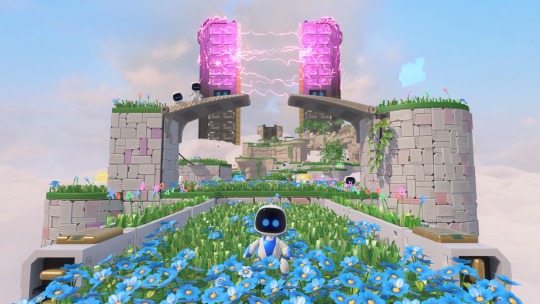
Coming pre-installed on your shiny new (and hopefully not scalped) Playstation 5 console, Playroom begins as a humble introduction to the capabilities of the Dual Sense controller. Touch control, haptic feedback, adaptive triggers and the like are introduced and may well generate some cooing and low-key positivity, however this enthusiasm is elevated by a mighty factor when the game truly begins and everything is put so deftly into practice.
It’s not a complex or particularly challenging title as far as 3D platformers go, with frequent checkpoints and no life counter in sight. Any mould-breaking to be done comes instead from the diversity in how you control various sideshows, with the entire kitchen sink’s worth of interface options being showcased as you climb into a monkey suit, blast off a rocket ship, bounce around as a pinball, and so on. All of these demonstrate ingenuity that could’ve easily gone awry, yet are quickly understood, and grounded in a level of both tactile and in-game feedback that maintains a natural feeling. The game’s worlds serve as virtual tours through colourful, fantasy depictions of hardware components that demonstrates an excellent level of both pride and playfulness, with fellow bots littering both the through-fare and the unbeaten paths, dressed up and enacting smart homage to generations of games and their characters, all while Playstation-themed collectables are doled out in tandem alongside smart, well-natured puns. It arguably borders on propaganda at times, such is the intense positivity. That said, the more extensive your tenure is with Sony’s platforms, the more likely it’ll dull your better judgement to this, instead letting slip a grin at what is essentially the grandest love letter to all things Playstation, and the warmest, most celebratory pack-in for a new console Sony could have ever hoped for.
The showcasing of new features and hardware aside, it’s also a subtle and unofficial coronation of Astrobot as Sony’s newest (and best) mascot. There’s been plenty of candidates in the past who’ve half-heartedly assumed to own the position, but it’s the silent, cheerful charm which makes Astro that much more of an endearing figurehead. G'wan the little guy.
No More Heroes 2: Desperate Struggle
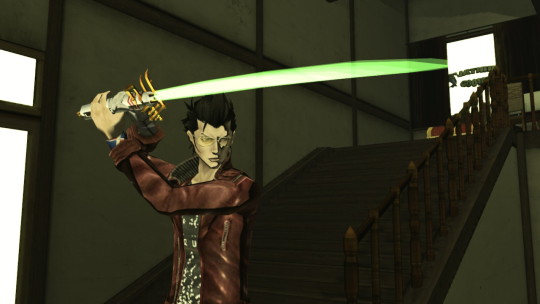
For someone that loves Suda51 and adored No More Heroes, my reaction to No More Heroes 2 on its original release was comparatively tepid. With a third game due next year, this re-release felt like the right time to revisit it and see it through, and although I found some things to enjoy, I certainly found plenty to remind me why I had bounced off it previously.
Roaming about in Santa Destroy between missions is gone, instead replaced with a short check list of destinations. While not a fan of the change myself, this isn’t necessarily a bad thing - though it does give a misleading impression of tightened focus that is very quickly lost as it lays out a spread of half-baked, and frankly clumsy mini-games. As well as being your prime source for money and upgrades, these do a lot to artificially increase the length of the game, and put simply, they’re just not fun enough to warrant this level of prominence. Even the main story has frequent moments where it veers away from the core 3D hack and slash gameplay, and again, these do more harm than good to the game’s flow.
The fighting underpinning it all has undoubtably been done better since by any number of titles, and though imperfect, it is still serviceable and enjoyable for the most part. Boss battles definitely hold the lion’s share of the game’s highlights, but there’s a few that also stick out with some poorly executed designs that tars its lasting impression. Shades do remain of the ridiculous, irreverent charm of the first game, although they are certainly more infrequent, and a more modern lens also brings into question just how sincerely we should take the sending up of Travis, when cast upon a backdrop of frequent fanservice. Not the best sequel then, but let’s hope 3 gets things back on track.
3 notes
·
View notes